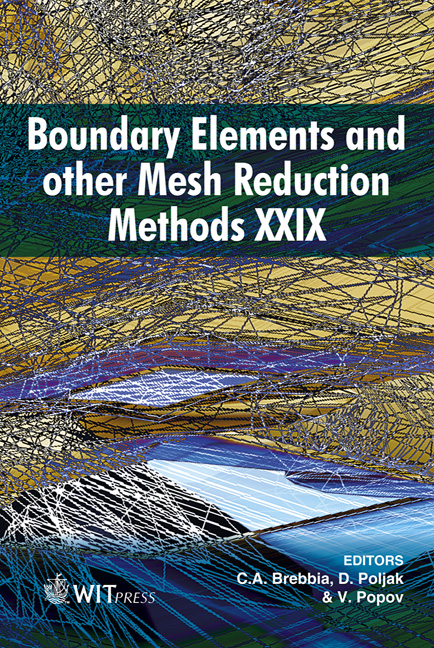Numerical Analysis Of Compressible Fluid Flow In A Channel With Sharp Contractions
Price
Free (open access)
Transaction
Volume
44
Pages
10
Published
2007
Size
522 kb
Paper DOI
10.2495/BE070181
Copyright
WIT Press
Author(s)
L. ˇSkerget & J. Ravnik
Abstract
The problem of unsteady fluid flow in a channel with a sharp contraction is studied numerically. An incompressible and full compressible Navier–Stokes set of equations is considered. The thermal energy equation is written in its most general form including the Rayleigh and reversible expansion rate terms. Flows for different Reynolds number values are studied in the context of unsteadiness of the flow. The influence of the additional nonlinearity due to compressibility of the fluid, dissipation and reversible rate of work are analyzed. Also, their influence on the stability of the flow is considered. The boundary element numerical model is used, with the velocity vorticity formulation of the Navier–Stokes equations. The pressure field is evaluated from the pressure Poisson equation. Material properties are taken to be for the ideal fluid (air), and assumed to be pressure and temperature dependent. 1 Introduction There are a large variety of forced-convection processes for gases flowing in closed conduits which can be reasonably approximated as constant pressure processes. In this study we examine the thermal energy equation for a flow which is neither constant density nor constant pressure. Here we consider the unsteadiness of compressible viscous flow in channels with sharp contractions. Due to sharp discontinuity in the channel geometry the thermal energy equation is written in its expanded form with the terms such as the rate of reversible work and the rate of irreversible or dissipation work. The coupled momentum and thermal energy transport equations, specially due to mentioned rate of work terms, drastically increased
Keywords





